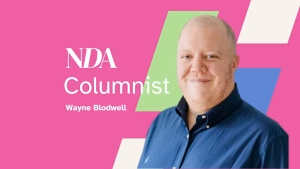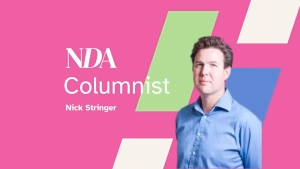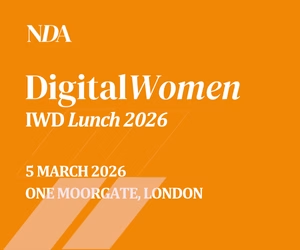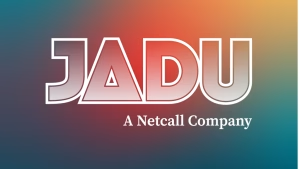Tiffany St James is one of the UK’s most experienced digital transformation specialists, the founder of Transmute and former Head of Public Participation for the UK Government. She is now also NDA’s new monthly columnist.
A blank sheet of paper
One of the questions that I get asked all of the time running digital transformation projects is, how do you begin?
If you have to bid for a budget, how much it is going to cost?
If you’re going to start shaping your team, which particular roles do you need?
How do you even begin to decide which of all the projects within the business are ripe for digital transformation – where or what should you start first?
These questions and others I will start to unpack here in my monthly column.
I’m Tiffany St James and I have a habit of picking up projects that have never been tackled before. I spent a decade in early digital government transformation, as the first Comms Director of Directgov, first Head of Social Media and open policy making pan-government (a first worldwide, which meant I had no peer group to pick up the phone to) and launching the UK Governments Open Data Store, Data.gov.uk in 8 weeks.
Since then I’ve been running digital transformation programmes through my consultancy Transmute for other governments and global businesses and am currently the Chief Digital Officer at Lambeth Council, helping to transform my borough and rapidly change digital services for residents in a slice of London covering 320 000 people.
Back to that blank sheet of paper…
It’s fair to say that digital evolution is constant, and the jury is out on the term ‘transformation’, when something is transformed, its state is changed and that should be it, right? So, some purists baulk at the phrase transformation.
Whatever you decide to call it in your business, ‘digital transformation’, ‘business transformation enabled by digital’, ‘digital evolution’ ‘digital service delivery’ I don’t really mind. What we are talking about here is changing your business and organisation to embrace the best digital technology, processes and people to deliver upon your business objectives. Let’s get to it..
Start with a Vision
No matter where you are right now, you must define where you want to be.
What do you want your business, agency, organisation to look and feel like in the future?
Do not jump straight to redefining your target operating model. Craft your vision with care.
Your compelling vision should not change. Consider your audiences and involve both internal people and key stakeholders, as well as ensuring you have input from your audiences and customers into creating your vision statement. In a true design-led approach users should be at the heart of everything you do, so involve them.
Make sure that you involve the CEO and Senior Management Team as well as people outside of the leadership working across the business from marketing, operations and service delivery. Run a workshop, get their opinions.
What will the organisation look and feel like in the best version of itself in the future?
Consider it from service delivery and/or sales, talent, culture and reputation.
Creating a vision statement
So, I’ve got a bunch of opinions on Post-its, how do I make that into a vision statement?
There are a couple of different approaches to this:
Vision as a Purpose
Some organisations articulate their vision in a single short purpose statement.
In Simon Sinek’s ‘Find your Why’, looking at your overall purpose (personally, or for teams) boils it down to:
“To___________________” (the contribution the organisation makes)
So that________________ (the impact or effect that the contribution has on others)
Just because this version is short, does not necessarily make it speedy. It might take time, deliberation, contribution and testing to get the clear short articulation you are after.
Vision as a Positioning Statement
Other organisations prefer to articulate their vision in a positioning statement.
We (WHAT core competencies do you have)
For (WHO are your clients, users, customers)
By (HOW our unique processes, knowledge, skills or culture)
Because (WHY your calling, what you believe in)
For example:
We embed best in class digital capability
For global businesses or governments
By our smart practical unique processes and the coal-face experience of our team
Because we believe in helping to make Britain a global digital powerhouse
Vision Statement Framework
One way of mapping out a longer form vision is to fulfil a Vision Framework.
This should always be informed by the inputs that you have gathered from internal and external sources. In some cases senior managers on management teams answer the following questions independently and then combine the answers to draft their vision statement before testing and incorporating user and audience feedback.
Vision Statement
What we want to achieve or where do we want to be?
Purpose or Mission
Why do we exist?
What do we do?
Four Key Accountabilities
What are we here to achieve?
Enablers
What do we need to be successful?
Whether you use any of these methods or others, your vision statement should stand up as your aspirational future state of where you want to be that is equally as appealing to key stakeholders and staff as it is to users or customers.
Next month I will look at how you get from a vision to your first 12 months strategy.










